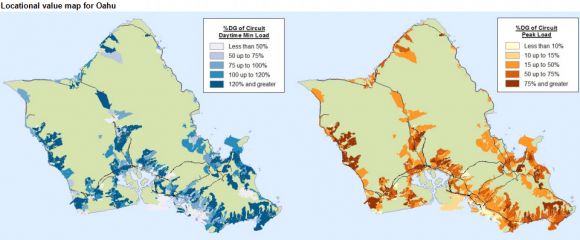Last week, utility Hawaiian Electric (HECO) said it had approved all the delayed rooftop solar applications on Maui and Hawaii island that had been waiting since October, according to Jim Alberts, senior VP of customer service at HECO, who spoke at the Maui Energy Conference, as reported in the Honolulu Star-Advertiser. Alberts said that all of the applications on Maui and the Big Island had been cleared, while 90 percent of the 2,749 pending applications on Oahu would be cleared by the end of April.
Cory Honeyman, senior solar analyst at GTM Research, noted that as of February 26, HECO has already "approved a total of 764 customers out of the 2,749 applications it planned to accept by April this year." He called it "an encouraging sign of HECO's growing capabilities to expedite its interconnection review process with pre-approved inverter technology."
A source close to the utility has suggested that almost all of the approvals have already been completed.
Marco Mangelsdorf, president of solar installer ProVision, notes, "We are seeing those acceptance letters being received by our clients," adding that the inverters used must be on "HECO’s compliance list for advanced settings."
Raghu Belur, co-founder of microinverter firm Enphase, points out that the "advanced settings" apply to "transient overvoltage 2" and the interim voltage and frequency ride-through parameters. The "final" settings will need to be in place by the end of September. Belur states that Enphase's software-configurable microinverter allows the company to do a remote push of its software upgrade to thousands of microinverters already on customer rooftops. That upgrade is more challenging if each installation requires a truck roll to reconfigure a static inverter, however.
One in nine Hawaiian residences are PV-powered, the highest percentage of solar penetration of any U.S. state. But the momentum in installing solar has been lost due to a slowdown in PV approvals by the utility as it seeks to contend with the technological and economic impacts of ubiquitous solar.
Mangelsdorf notes that March will be the first time in two years that PV permit numbers on Oahu are going up compared to the previous year. “I expect that these acceptance letters from HECO should lead to a bump of increased permitting activity lasting perhaps several months. After that, we will see how significant an effect going from 120 percent to 250 percent of daytime minimum load on a per circuit basis in equivalent NEM generating capacity will have on the numbers."
***
GTM's Jeff St. John recently analyzed an Energy Information Administration report on solar energy in the island state. Excerpts of his article follow.
The EIA released a report on Hawaii’s solar status that lays out the state’s situation in graphic detail. Over the past five years, net-metered solar capacity has skyrocketed on the island of Oahu, and has grown significantly on the smaller, more constrained grids of Maui and the Big Island.

Big wind farms and thousands of solar rooftops are changing the shape of Oahu’s energy supply-demand curve, in ways that threaten grid stability as well as the economics of generating most of its power with imported oil. DOE labs have been working with Hawaiian Electric, the company that runs utilities on Oahu, Maui, Molokai and Hawaii, to track these system effects, with results like these showing the telltale duck shape -- or, as HECO has dubbed it, the “Nessie curve” -- caused when midday solar exceeds demand, then drops off to leave the utility with steep ramps in demand to match with limited resources.
On Oahu, solar penetration has increased to beyond daytime minimum load on many distribution grid circuits, meaning that there’s more solar power being generated than electricity consumed by customers on that section of the grid. That’s the problem that led HECO to slow down new permits last year -- and prompted the Hawaii Public Utilities Commission to respond with a broad set of orders, demanding that the state’s primary utility make fundamental changes to how it manages distributed energy.

DOE’s National Renewable Energy Laboratory is helping out on this front by hosting tests of smart solar inverter capabilities with the Electric Power Research Institute and big third-party-solar provider SolarCity. That work led directly to HECO’s proposal to double the amount of solar it’s comfortable permitting on already-impacted circuits, from 120 percent to 250 percent of daytime minimum load, without causing grid-destabilizing voltage problems.
By easing the bottleneck on new solar projects, HECO also hopes to justify a concurrent plan to replace its lucrative net-metering tariff with a new set of credits that would pay roughly half as much for customer-generated power.
NextEra Energy is buying Hawaiian Electric Industries for $4.3 billion, and thus will inherit this solar situation and PUC/utility dynamic.



